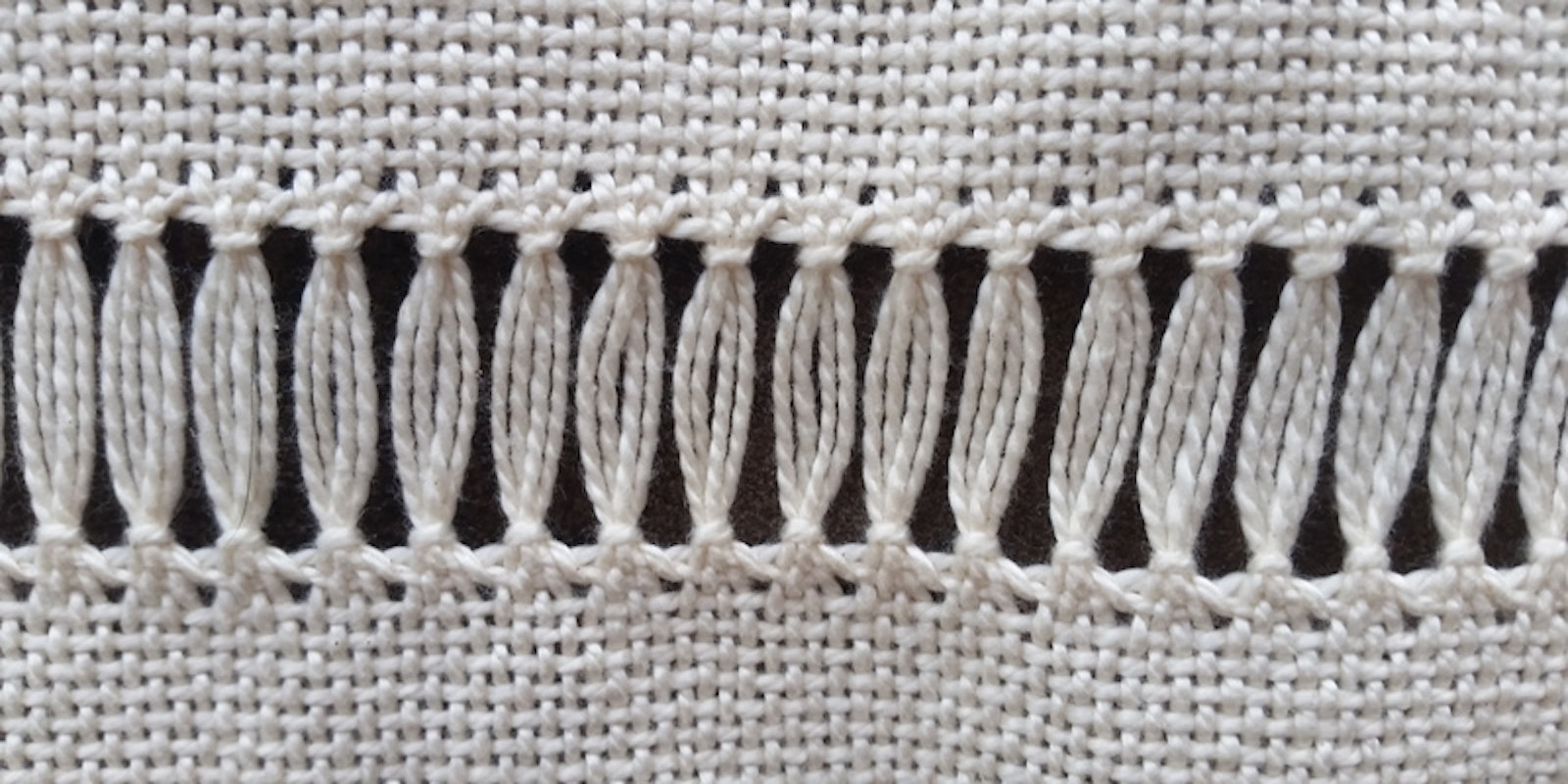I’m not sure why I didn't do it before, but I think it was the same reason warping boards intimidated me: I didn’t know how to do it and assumed it would be hard or that I’d do it wrong and ruin a piece. Now, unless I’m hemming my weaving (and sometimes even then), I always hemstitch.
Your basic, run-of-the-mill hemstitching (like we feature in the back of every issue of Handwoven) is what I use the most often. Typically instructions only have you hemstitch if you’re going to have loose bundles of fringe, but if I’m going to have any sort of fringe on my piece, I hemstitch. The hemstitching not only keeps the weft from raveling while I tie, braid, or twist fringe, but also makes the hem look so much nicer once my chosen fringe is finished.
You know those little bumps that sit beneath each bundle of fringe? You can get rid of those simply by hemstitching. It is, dare I say, more professional and “finished” looking. It also makes for a significantly more stable fabric than knotted, twisted, or braided fringe alone.
This hemstitching sampler by Sara Bixler features a variety of hemstitching techniques from weft protection to purely decorative. Photo courtesy of Sara Bixler
If you want to give your fringed hems even more oomph, you can try out Italian hemstitching or square hemstitching. They do the same job as square hemstitching but add extra decorative touches. Italian hemstitching gives you lacy little holes, and square hemstitching gives you little squares on one side of the fabric and Xs on the reverse.
Then, of course, there’s purely decorative hemstitching—the kind you can do within the weaving of the fabric to create areas of lace, twists, and even embroidery-like designs. They won’t secure your weft, but they will add extra interest to your project and create striking areas of negative space. It’s the sort of thing that will take your table runners, scarves, and even fancy towels to the next level.
Hemstitching is one of those wonderful techniques where once you learn how to do it, you’ll find new and wonderful ways to incorporate it into your weaving. Curious about different hemstitching techniques and how to use them? I suggest learning from the pros, specifically Sara Bixler. For starters, you can check out Sara Bixler’s video Designing with Hemstitching.
Happy Weaving! Christina


